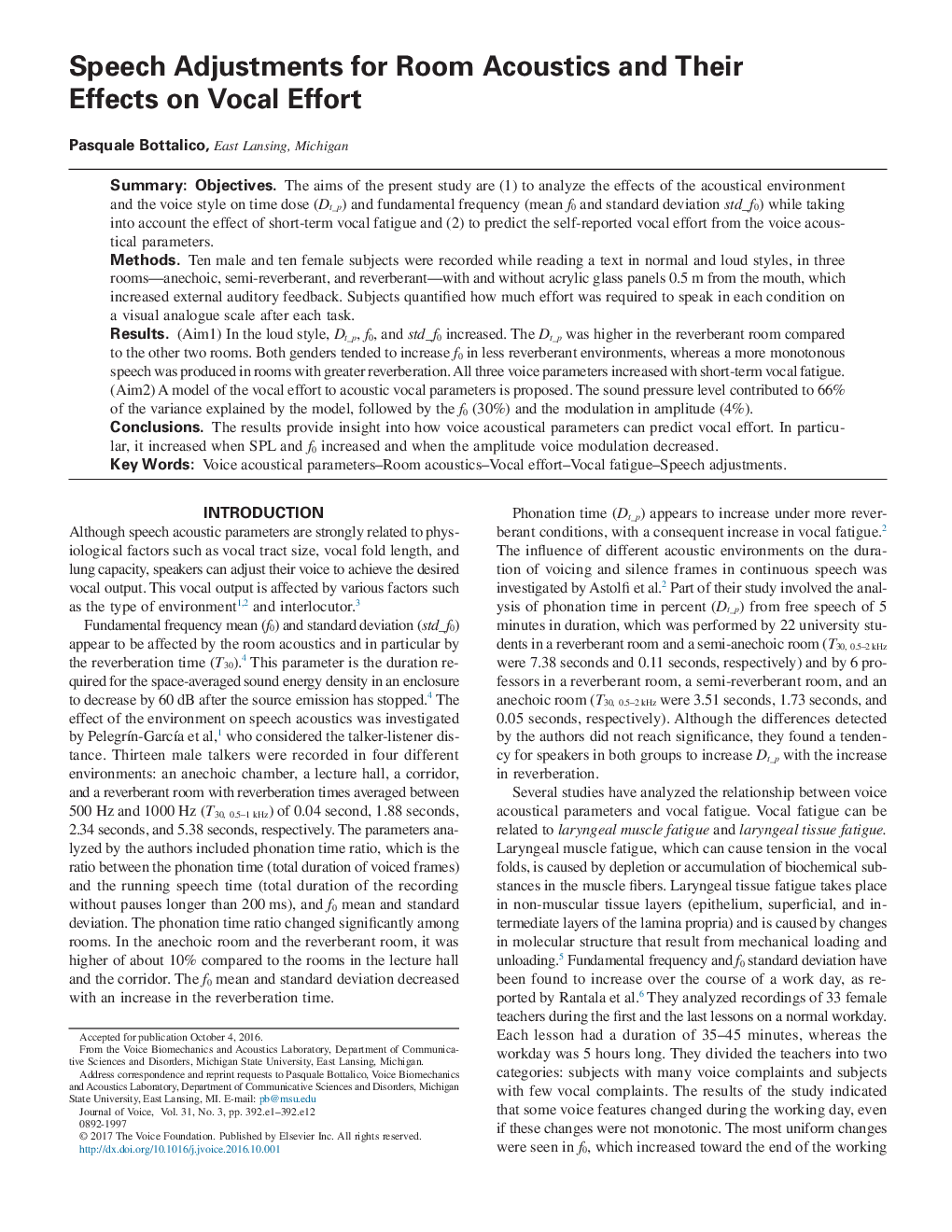| Article ID | Journal | Published Year | Pages | File Type |
|---|---|---|---|---|
| 5124286 | Journal of Voice | 2017 | 12 Pages |
SummaryObjectivesThe aims of the present study are (1) to analyze the effects of the acoustical environment and the voice style on time dose (Dt_p) and fundamental frequency (mean f0 and standard deviation std_f0) while taking into account the effect of short-term vocal fatigue and (2) to predict the self-reported vocal effort from the voice acoustical parameters.MethodsTen male and ten female subjects were recorded while reading a text in normal and loud styles, in three rooms-anechoic, semi-reverberant, and reverberant-with and without acrylic glass panels 0.5âm from the mouth, which increased external auditory feedback. Subjects quantified how much effort was required to speak in each condition on a visual analogue scale after each task.Results(Aim1) In the loud style, Dt_p, f0, and std_f0 increased. The Dt_p was higher in the reverberant room compared to the other two rooms. Both genders tended to increase f0 in less reverberant environments, whereas a more monotonous speech was produced in rooms with greater reverberation. All three voice parameters increased with short-term vocal fatigue. (Aim2) A model of the vocal effort to acoustic vocal parameters is proposed. The sound pressure level contributed to 66% of the variance explained by the model, followed by the f0 (30%) and the modulation in amplitude (4%).ConclusionsThe results provide insight into how voice acoustical parameters can predict vocal effort. In particular, it increased when SPL and f0 increased and when the amplitude voice modulation decreased.
